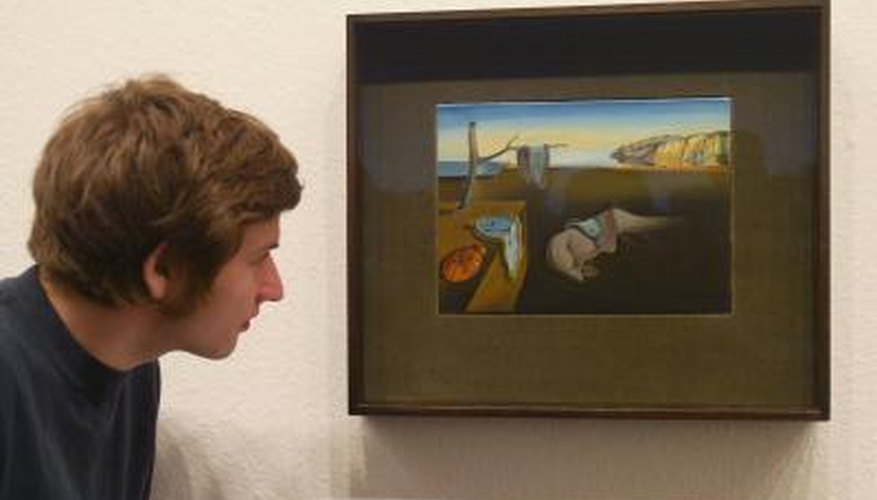The subject matter in works of art can be as diverse as art itself. Great works of art have focused on such subjects as the human form, bowls of fruit and even common household items such as clocks. In the hands of a talented artist with a creative mind, however, a clock can become far from common.
Salvador Dali: "The Persistence of Memory"
No painting is more identified with Spanish artist Salvador Dali than his 1931 work "The Persistence of Memory." Painted when he was just 27, the visually shocking piece depicts pocket watches that appear to be melting on tree branches. This painting, like many of Dali's works, fits into the category of what he called "hand-painted dream photographs." A widely recognised image, "The Persistence of Memory" has been referenced in numerous forms of pop culture, and was even spoofed as a sight gag in an episode of "The Simpsons."
- No painting is more identified with Spanish artist Salvador Dali than his 1931 work "The Persistence of Memory."
Henri Matisse: "The Red Studio"
Henri Matisse painted "The Red Studio" in 1949. Using oil on canvas, Matisse used his studio as the subject, depicting completed paintings, sculptures, works in progress and his work table. At the centre of the room --- and the painting --- is a grandfather clock, a visual focal point that draws the eye to the clock face. Intriguingly, the clock has no hands. According to the label text accompany the painting where it hangs in New York's Museum of Modern Art, "It is as if, in the oasis of the artist's studio, time were suspended."
- Henri Matisse painted "The Red Studio" in 1949.
- According to the label text accompany the painting where it hangs in New York's Museum of Modern Art, "It is as if, in the oasis of the artist's studio, time were suspended."
Paul Cezanne: "The Black Clock"
Paul Cezanne's "The Black Clock," painted sometime around 1870, is a still life of a table containing an number of objects. One of these, slightly to the right, is a small black clock. Cezanne's still life revels in the contrasts between colours and shapes, exploring the interplay between shadow and light. Cezanne depicts a sense of symmetry that exists in a simultaneous sense of chaos. Despite the ordinariness of the subject matter, the clock is of special interest, as it has no hands.
- Paul Cezanne's "The Black Clock," painted sometime around 1870, is a still life of a table containing an number of objects.
Edvard Munch: "Between the Clock and the Bed"
Edvard Munch is best known for his visually arresting painting, "The Scream." In 1940, he painted a self-portrait he titled "Between the Clock and the Bed." Munch is shown standing slightly to the left of the painting's centre, with a bed on the right and a large grandfather clock on the left. Like the clocks in both Matisse's "The Red Studio" and Cezanne's "The Black Clock," this clock also has no hands, and also has no numbers. According to a summary of the painting written by David Loshak, Munch's placement of himself between a bed and a useless clock was a statement on the relationship between time and sleep.
- Edvard Munch is best known for his visually arresting painting, "The Scream."
- According to a summary of the painting written by David Loshak, Munch's placement of himself between a bed and a useless clock was a statement on the relationship between time and sleep.
